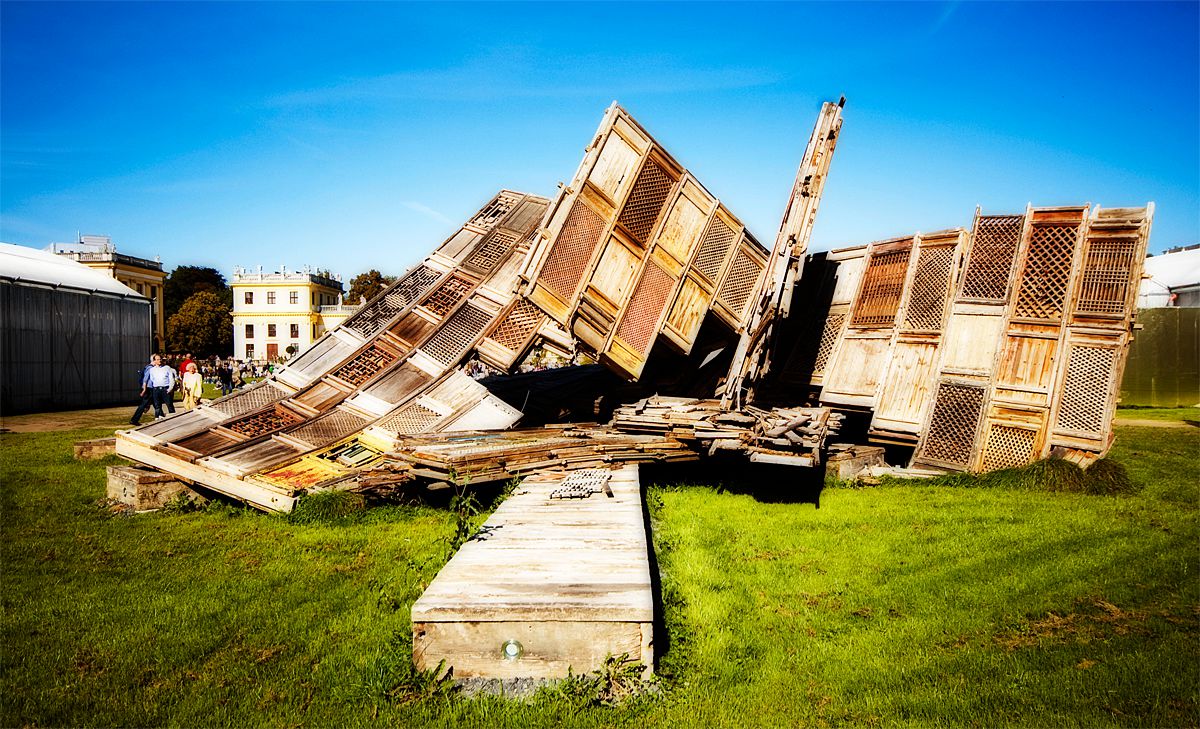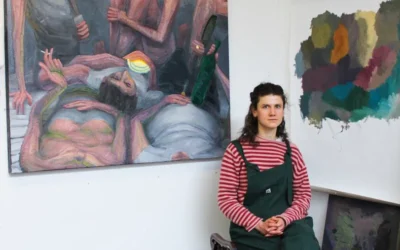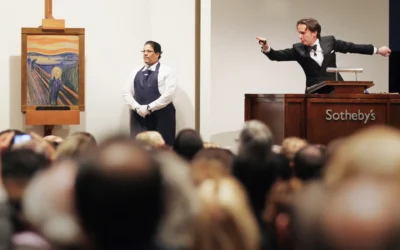On the evening of 16th September 2015, we were privileged to be invited to attend a select conversation between one of China’s most influential artists, Ai Weiwei, and Tim Marlow, the curator of his biggest exhibition in Britain to date.
After detention in China and struggle to attain a visa, his visit to London is quite an achievement, given that he has not been able to visit one of his own exhibitions in person for the past five years. This is ironic, given the proliferation of his work and political activity across the globe: in gallery spaces and on the Internet. Indeed, the Internet has been instrumental in catalysing his career, a medium that has both caused his imprisonment, and enabled him to continue producing work and exhibitions remotely. Remoteness is a theme that persisted throughout the hour long conversation in the intimate surrounds of the Royal Institution lecture theatre. This was a rare and special occasion to hear him speak first hand, rather than through an art object or social media platform.
Weiwei is currently writing a book on his father, Ai Qing, one of China’s most famous modern poets, and Tim Marlow opened the conversation centring on his relationship with him. As an artistic character himself, Qing was punished for his independent thinking when returning to China after a period studying art and poetry in 1930s Paris. The family lived in poor conditions and his father was prescribed to clean the village’s thirteen toilets, a job that Weiwei says he approached as a poet: precisely and honestly. This humility runs through Weiwei and is felt through the effort spent to straighten rebar salvaged from the 2008 Sichuan earthquake; each bar requiring 200 blows to be returned to a factory-like state. Contrary to his father’s wishes, Weiwei pursued a career as an artist, and on return to China from a time in New York, continued the free-speaking his father started. Later in the conversation, Weiwei revealed that he would encourage his own son to do the same.
As the conversation progressed, Weiwei revealed that the Internet is a catalyst for him, and altered the trajectory of his career more so than any particular artwork or series. In 2005, a state owned company opened a blog that became a platform for Weiwei to exercise his voice. To begin with he did not know how to use a computer, but within a short space of time was on it night and day writing and discussing. After posting names of victims from the Sichuan earthquake, it caused his arrest and detention for 81 days. During this period, the Internet became a powerful force used by others petitioning his freedom; something Weiwei admitted towards the end of the interview had probably contributed to his release. His attachment to the Internet was made obvious during the event as he removed his iPhone from his jacket pocket. After taking a three photos of the audience for Instagram, he put it away saying he would have to turn it off. This is a man always connected to the people that share his opinion, irrespective of geographic location.
Until his passport was returned, Weiwei was unable to leave China. Here, the Internet helped again. It has acted as a transportation device, allowing him to continue producing work and exhibitions. He described the joy of working remotely to develop exhibitions such as the current one at the Royal Academy. Always working in response to architecture, he studied the Royal Academy’s gallery spaces through images and film footage to draw up an architectural plan for the show similar to the one found in its accompanying handout. His architectural mind is manifested in ’S.A.C.R.E.D.’ (2011-13), a depiction of the living conditions he suffered under detention in the form of six large, scaled-down models, based on guesstimated measurements formulated during his arrest. He believes an inability to travel afforded him greater concentration on his work, and increased productivity. He has been able to stage over 100 shows in just five years, a number that would have amounted to but 25 if permitted to travel. Being asked whether the show’s physical and spatial qualities met his expectations, he said it was exactly as imagined. On arrival to the Royal Academy before the show’s opening, he moved only the ‘Coloured Vases’ (2006) a couple of centimetres.
His artworks are also produced is in a similarly remote way, with a network of artisans creating work under his direction. The volume of work produced by Weiwei reflects the Chinese tradition of mass-production that has supplied the demands of the rest of the, mostly Western, world. It may take 3 months to make a work in China that would otherwise take a year or more to produce in the West. In answer to a question about how the production of his work may change with the return of his passport, he expressed interest in the new types of skills and timescales that may become involved in future projects.
Although born out of necessity, working remotely has become a core element of Weiwei’s practice. Weiwei’s firm decision not to show early works such as his paintings — artefacts produced through direct physical contact with material — suggests he is conscious of this. All the work shown at the Royal Academy has been remotely made. Weiwei says that he was influenced by Duchamp to create object-based work, and through reading his writings, began to identify as an artist. Although this may partly explain the aesthetic of Weiwei’s work, its form also emerges from the agency of Chinese authorities. The Chinese customs officers become arbiters of what constitutes art when they decide whether Weiwei’s work can leave the country. His work is encrypted with political metaphor and goes under the radar of their traditional notion of art. For Chinese officials, ‘Straight’ (2008-12) is but a collection of raw material. Indeed, they do not perceive Weiwei to be an artist at all, believing that Western anti-China forces buy his work to launder money to encourage democratic change.
His visit to London is the first occasion in five years he has been able to see one of his own shows in person. Weiwei expressed dissent feelings when encountering the exhibition, ’It’s like a child not growing up with you, and when you met him, you [think] is this really my child?’, and the strangeness to be present among the installation team who had become so familiar with his absence. Although his blog was shut down by the government, the network of people flourishing around him is harder to make disappear. He shared an anecdote about his return to the the studio after his release, that he was welcomed by the sound of straightening rebar; a process that had begun just before his detention, ‘this was the most happy moment’. This bears testimony to this network’s commitment to his political and artistic cause. Although he works remotely, he is never isolated – even in the prison cell.
Digital (Dis)Connections is an RA Late event investigating the role of the Internet in Ai Weiwei’s work and our everyday lives on 24 October 2015.
Ai Weiwei is showing at the Royal Academy until December 18th.
William Fairbrother and Pinto Rai Dhir, Elizabeth Xi Bauer



